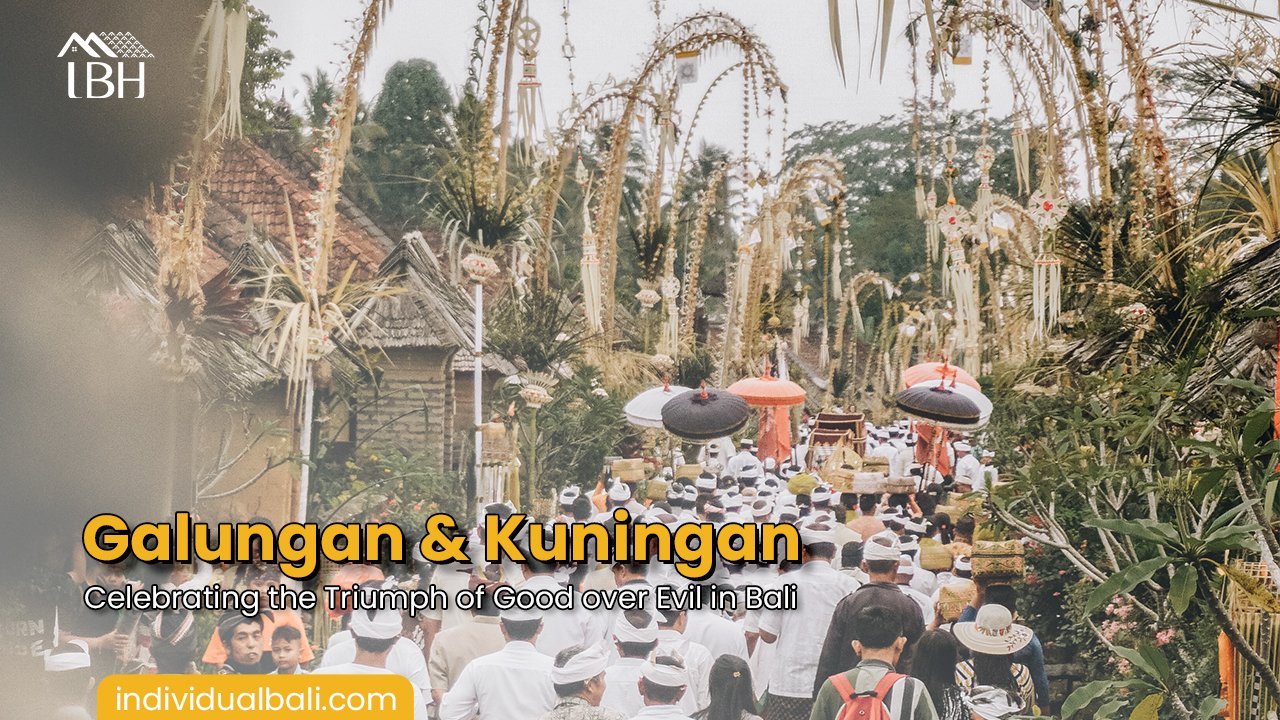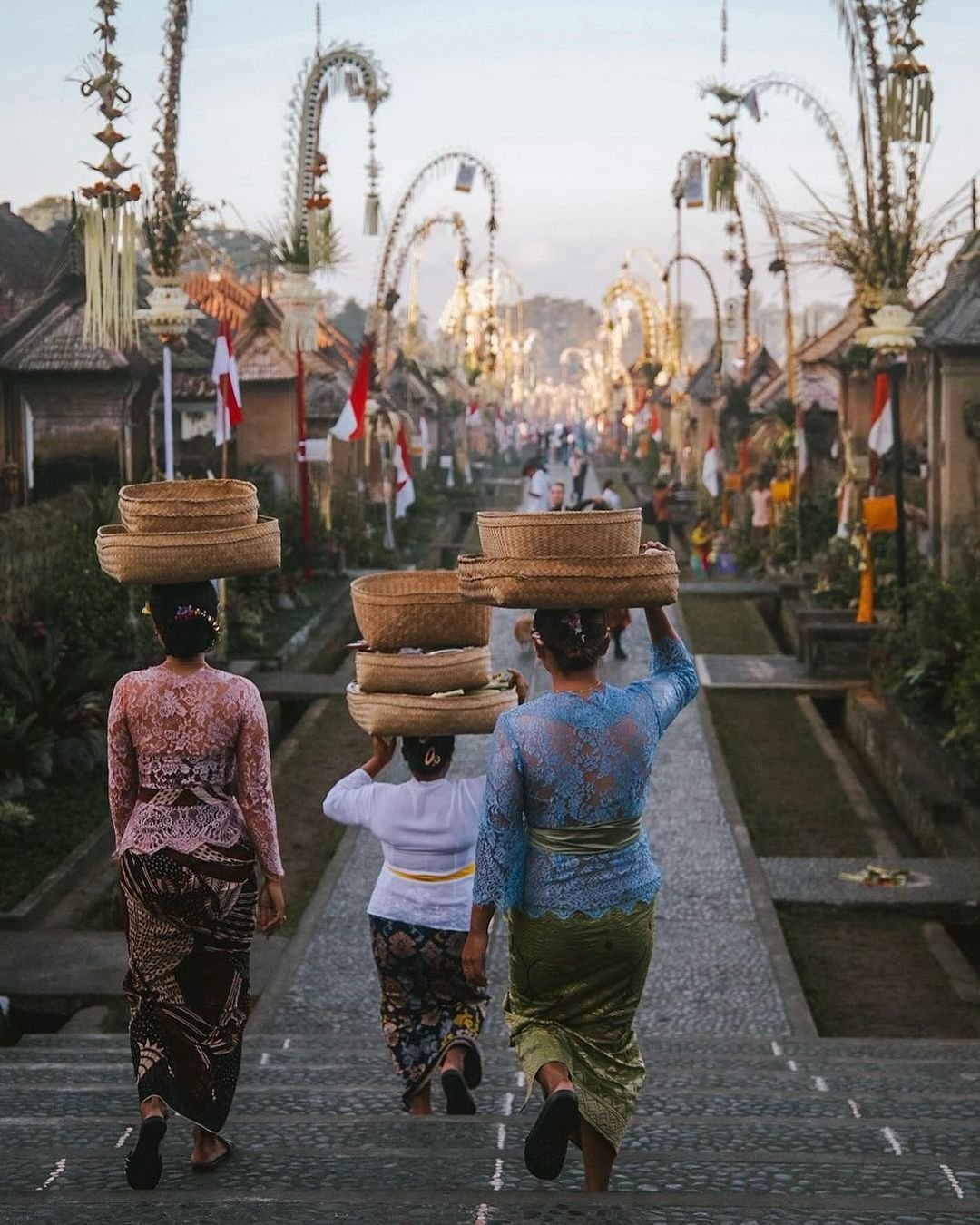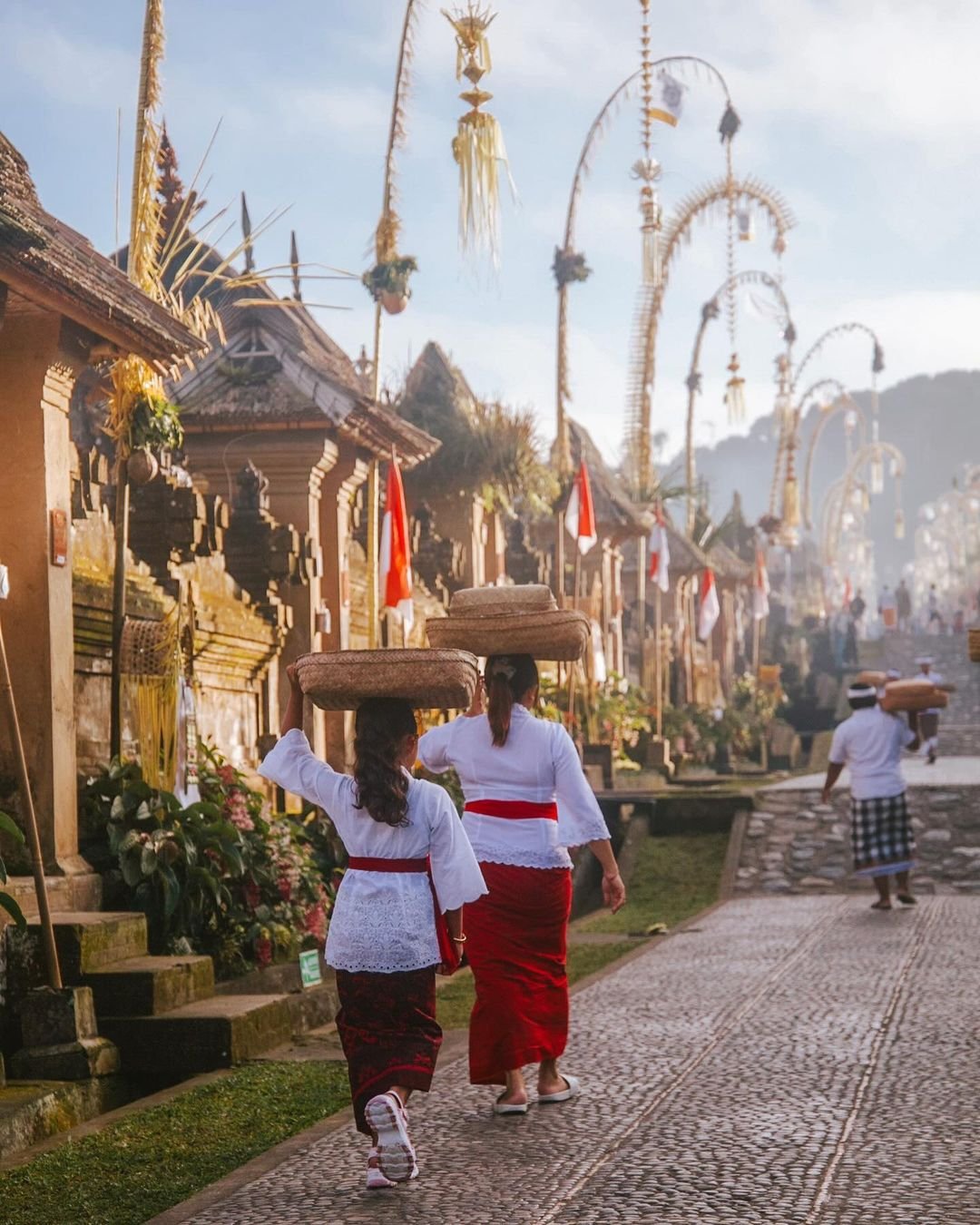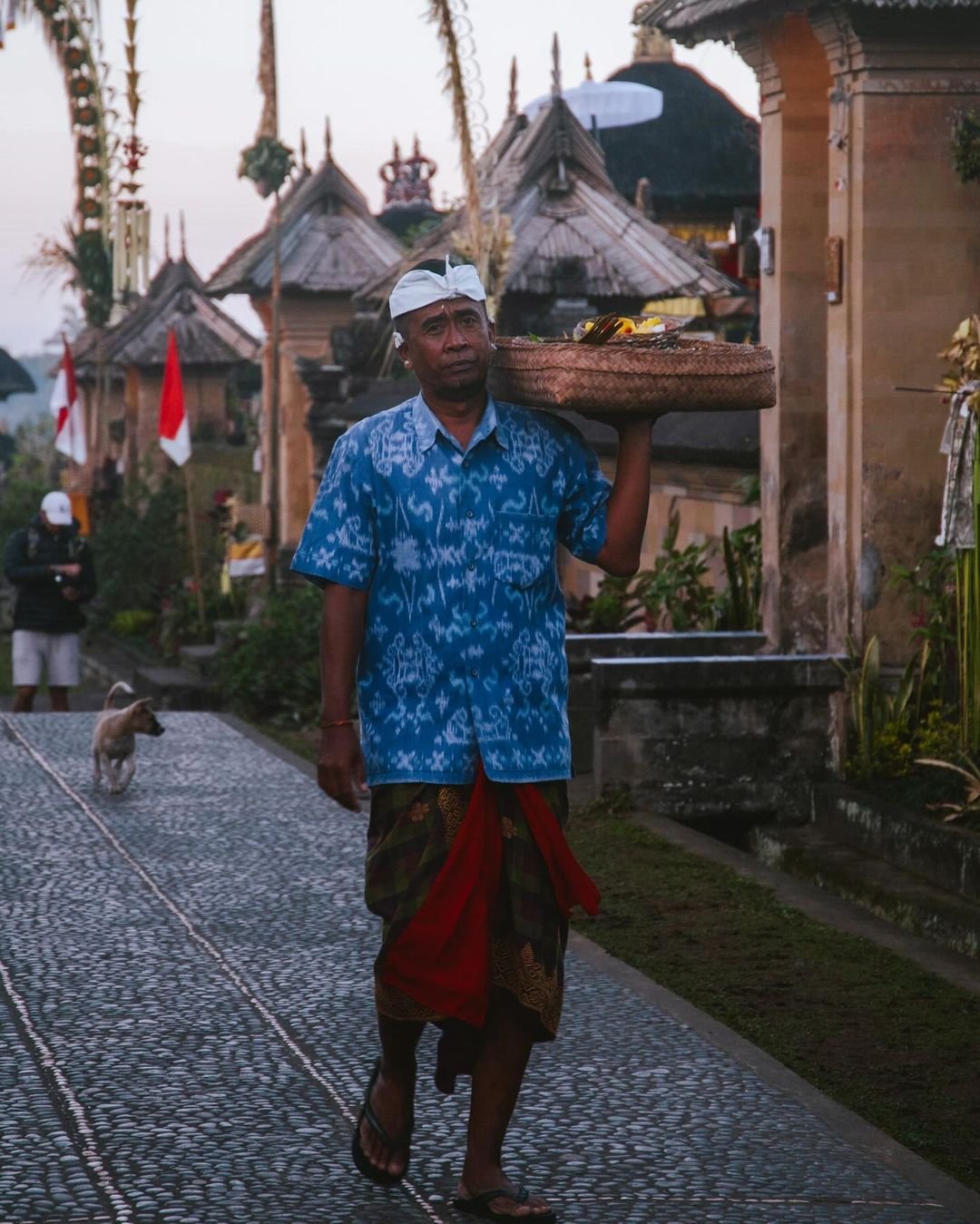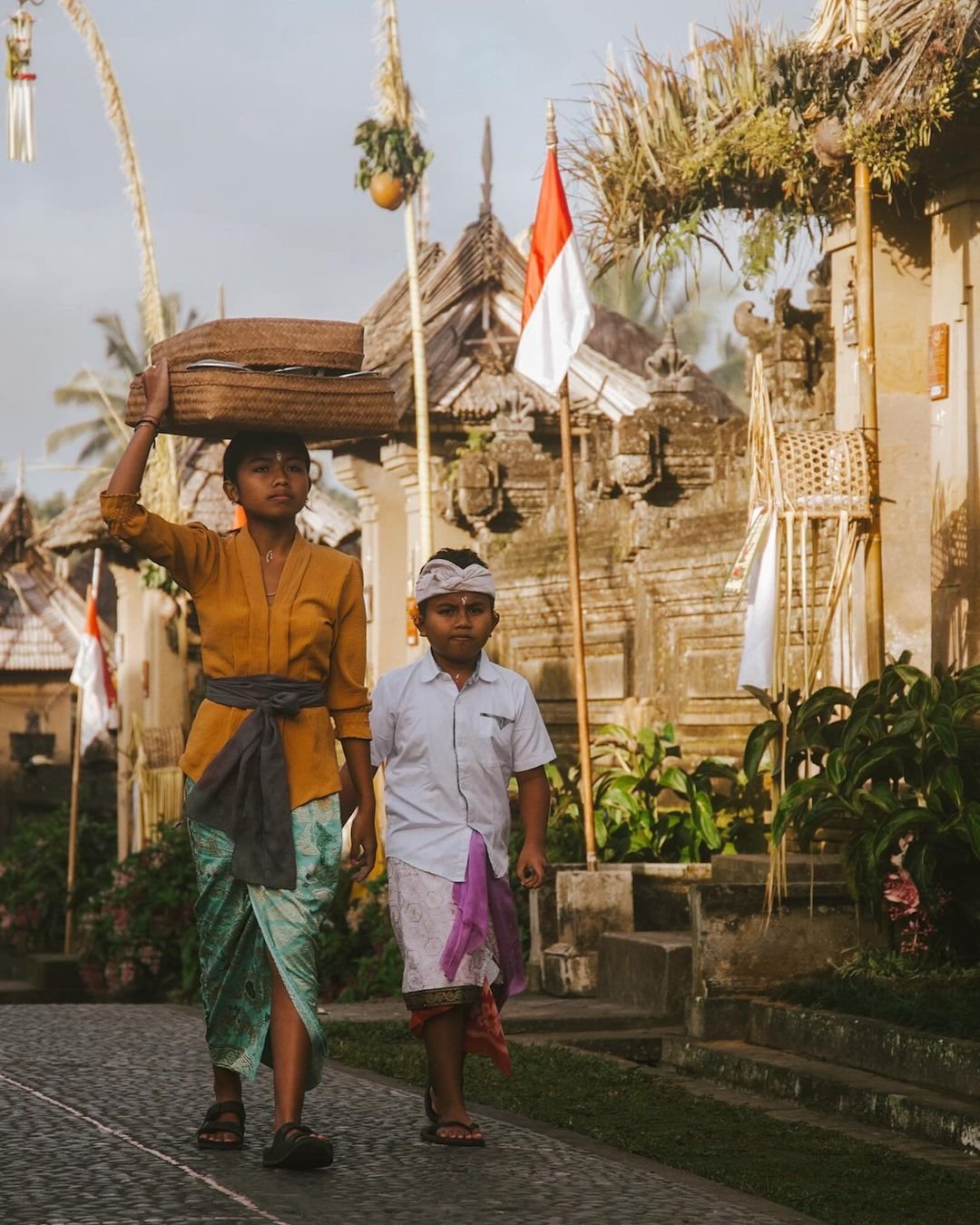Individualbali.com – Bali, the enchanting “Island of the Gods,” is not only known for its breathtaking landscapes and vibrant culture but also for its rich tapestry of religious festivals and ceremonies. Among the many festivals celebrated in Bali, Galungan and Kuningan stand out as two of the most significant and eagerly awaited occasions by the Balinese people.
Galungan Festival: The Triumph of Dharma
Galungan Festival, a significant event in the Balinese Pawukon calendar, symbolizes the eternal victory of dharma over adharma, embodying the essence of goodness prevailing over evil. This ten-day celebration, occurring every 210 days, illuminates the cultural and spiritual tapestry of Bali, uniting communities in reverence and joy.
Preparations for Galungan commence days ahead, as families meticulously cleanse and adorn their homes with ornate bamboo poles known as “penjor.” These majestic structures, gracefully adorned with coconut leaves, fruits, and vibrant flowers, weave a tapestry of beauty across the island, heralding the arrival of this auspicious occasion.
As Galungan dawns, Bali awakens to a symphony of vibrant ceremonies held within its temples. Attired in resplendent traditional garments, Balinese Hindus converge upon sacred sites, bearing offerings, or “banten,” to honor their ancestors and venerate the divine.
Among the myriad festivities, the captivating Barong Dance stands out as a timeless spectacle. This mesmerizing performance, steeped in mythology, depicts the eternal struggle between Barong, the embodiment of goodness, and Rangda, the harbinger of evil. Through intricate movements and vivid symbolism, the dance serves as a poignant reminder of the perpetual battle between light and darkness, echoing the underlying theme of Galungan.
Galungan Festival transcends mere ritual, embracing the essence of cultural heritage and spiritual devotion. It beckons individuals to reflect on the enduring triumph of righteousness and the eternal cycle of life, uniting hearts in reverence and celebration.
.
Kuningan: Honoring the Departed Spirits
Ten days after Galungan, Kuningan marks the end of the festive period. It is believed that on this day, ancestral spirits return to the heavens after their visit to the earthly realm. Kuningan is a time for the Balinese to pray and bid farewell to the departed souls, offering them blessings for a safe journey back to their abode in the heavens.
During Kuningan, the Balinese once again visit the temples, bringing offerings of yellow rice called “tumpeng” and various other delicacies. Yellow is the predominant color of the day, symbolizing prosperity and spiritual enlightenment.
On this special occasion, families also pay homage to the “sanggah” or family temple, where prayers and offerings are dedicated to the ancestral spirits. It is a moment of reflection, gratitude, and devotion to ancestors, who are considered as protectors and guides in the Balinese way of life.
Unity and Harmony
Galungan and Kuningan hold immense significance in Balinese culture, strengthening the bonds of community and reinforcing the island’s unique sense of harmony. These celebrations are not only religious occasions but also a reflection of the deep-rooted values that define Balinese society – respect for tradition, the importance of family, and the pursuit of spiritual balance.
For visitors fortunate enough to experience Galungan and Kuningan in Bali, it offers an extraordinary opportunity to witness the island’s vibrant cultural heritage. As the sound of gamelan music fills the air and the aroma of incense drifts from the temples, one cannot help but be captivated by the sense of unity and devotion that permeates every aspect of these enchanting Balinese festivals.

